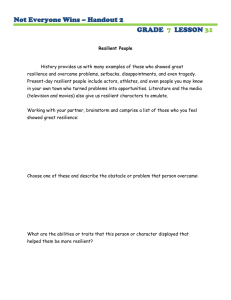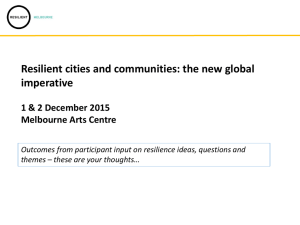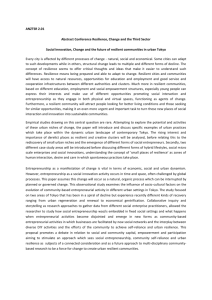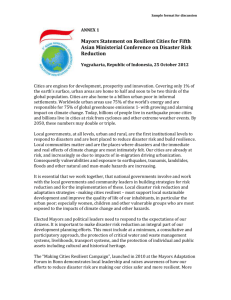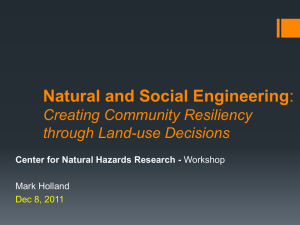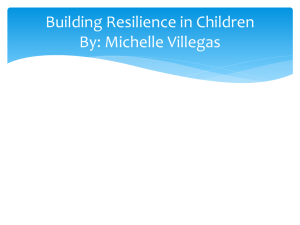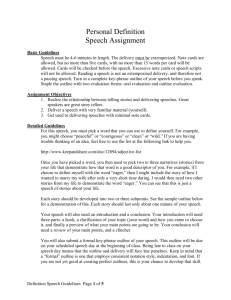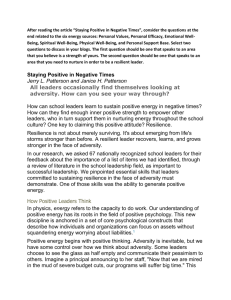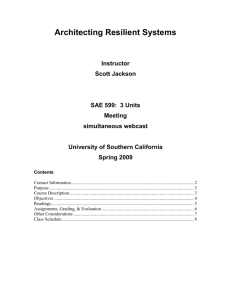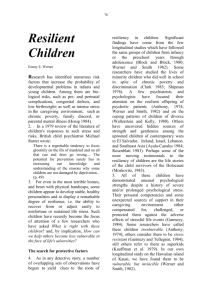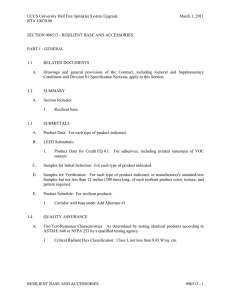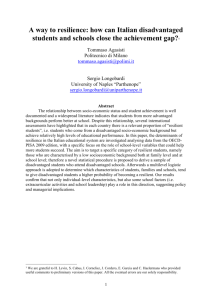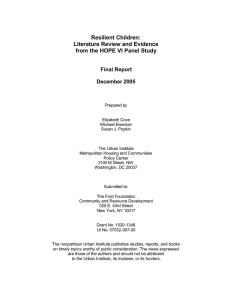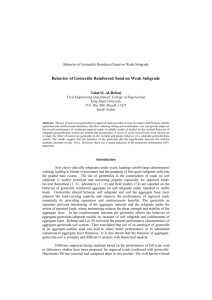The Resilient Classrooms project supports school psychologists in
advertisement
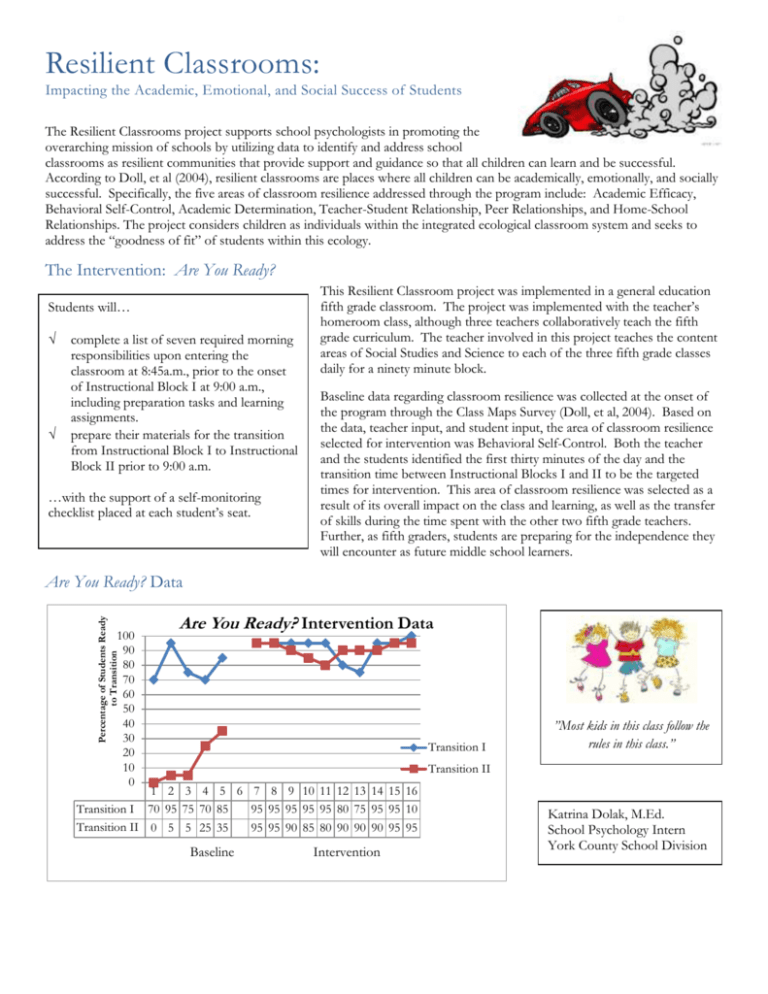
Resilient Classrooms: Impacting the Academic, Emotional, and Social Success of Students The Resilient Classrooms project supports school psychologists in promoting the overarching mission of schools by utilizing data to identify and address school classrooms as resilient communities that provide support and guidance so that all children can learn and be successful. According to Doll, et al (2004), resilient classrooms are places where all children can be academically, emotionally, and socially successful. Specifically, the five areas of classroom resilience addressed through the program include: Academic Efficacy, Behavioral Self-Control, Academic Determination, Teacher-Student Relationship, Peer Relationships, and Home-School Relationships. The project considers children as individuals within the integrated ecological classroom system and seeks to address the “goodness of fit” of students within this ecology. The Intervention: Are You Ready? Students will… complete a list of seven required morning responsibilities upon entering the classroom at 8:45a.m., prior to the onset of Instructional Block I at 9:00 a.m., including preparation tasks and learning assignments. prepare their materials for the transition from Instructional Block I to Instructional Block II prior to 9:00 a.m. …with the support of a self-monitoring checklist placed at each student’s seat. This Resilient Classroom project was implemented in a general education fifth grade classroom. The project was implemented with the teacher’s homeroom class, although three teachers collaboratively teach the fifth grade curriculum. The teacher involved in this project teaches the content areas of Social Studies and Science to each of the three fifth grade classes daily for a ninety minute block. Baseline data regarding classroom resilience was collected at the onset of the program through the Class Maps Survey (Doll, et al, 2004). Based on the data, teacher input, and student input, the area of classroom resilience selected for intervention was Behavioral Self-Control. Both the teacher and the students identified the first thirty minutes of the day and the transition time between Instructional Blocks I and II to be the targeted times for intervention. This area of classroom resilience was selected as a result of its overall impact on the class and learning, as well as the transfer of skills during the time spent with the other two fifth grade teachers. Further, as fifth graders, students are preparing for the independence they will encounter as future middle school learners. Percentage of Students Ready to Transition Are You Ready? Data 100 90 80 70 60 50 40 30 20 10 0 Are You Ready? Intervention Data Transition I ”Most kids in this class follow the rules in this class.” Transition II 1 2 3 4 5 6 7 8 9 10 11 12 13 14 15 16 Transition I 70 95 75 70 85 95 95 95 95 95 80 75 95 95 10 Transition II 0 5 5 25 35 95 95 90 85 80 90 90 90 95 95 Baseline Intervention Katrina Dolak, M.Ed. School Psychology Intern York County School Division
